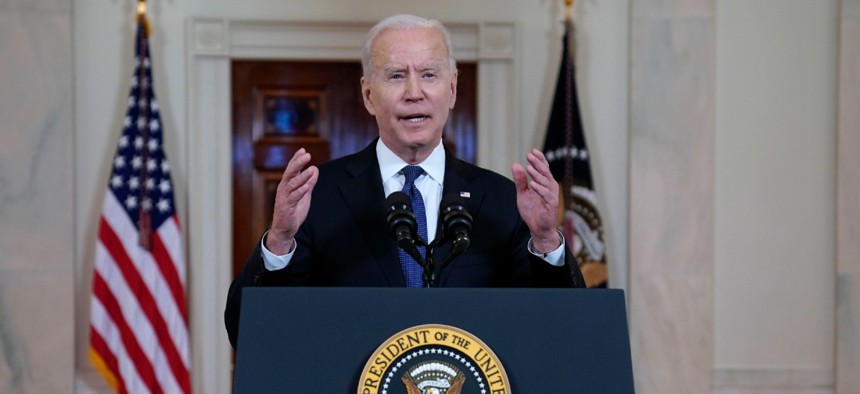Biden Requires Climate Considerations in Budget Process
The executive order is aimed at identifying and addressing the risks that climate change poses to Americans, the U.S. financial system and the federal government itself.
President Biden signed an executive order on Thursday requiring climate considerations in the budget process.
The executive order is aimed at identifying and addressing the risks that climate change poses to Americans, the U.S. financial system and the federal government. It is one of many actions the Biden administration has taken to address the climate crisis. It seeks to reach economy-wide net-zero emissions by 2050 and advance racial equity in its environmental policies.
“As the United States builds a modern and equitable clean energy future that creates millions of good-paying jobs and advances environmental justice, the agency actions spurred by the president’s directive today will help safeguard the financial security of America’s families, businesses, and workers from the climate-related financial risks they are already facing,” said a fact-sheet from the White House. “The executive order will also ensure that the federal government takes concrete steps to mitigate these risks itself.”
The executive order directs the Office of Management and Budget director to work with the Treasury secretary, Council of Economic Advisers chair, National Economic Council director and National Climate Advisor to determine the main sources of the federal government’s climate-related financial risk exposure and develop strategies “to quantify climate risk within the economic assumptions and the long-term budget projections of the president’s budget.”
It asks the OMB director, along with the Council of Economic Advisers chair, National Economic Council director, national climate advisor and other appropriate agency heads to devise and publish an annual report within the president’s budget about the federal government’s climate risk exposure. The order does not give a specific fiscal year for when this must occur.
Additionally, the order asks the OMB director to improve accounting methods for climate-related federal expenditures and “reduce the federal government’s long-term fiscal exposure to climate-related financial risk.” OMB should do this through the budget development process and its oversight of the budget’s implementation.
Other provisions from the executive order include:
- Requires the National Climate Advisor and National Economic Council director to develop a governmentwide climate risk strategy within 120 days to “identify and disclose climate-related financial risk to government programs, assets, and liabilities;”
- Encourages the Treasury secretary, who is the chair of the Financial Stability Oversight Council, to work with the council members to review how climate-related risks impact the federal government’s and U.S financial system’s stability. The secretary should also work with the member agencies to consider publishing a report within 180 days with recommendations on how to address this;
- Asks the Labor Department to consider publishing rules by September 2021 to suspend, revise or rescind rules from the previous administration that ban investment firms from taking environmental, social or governance factors into account for their decisions about workers’ pensions;
- Directs the Labor Department to assess how the Federal Retirement Thrift Investment Board has taken environmental, climate and social, and governance factors into account; and,
- Asks the Federal Acquisition Regulatory Council, with the Council on Environmental Quality chair and other appropriate agency heads, to consider amending the Federal Acquisition Regulation to incorporate more climate-friendly policies (such as requiring agencies to consider the social costs of greenhouse gas emissions in their procurement decisions and, when possible, give priority to bids that will yield lower emissions).
“The intensifying impacts of climate change present physical risk to assets, publicly traded securities, private investments, and companies — such as increased extreme weather risk leading to supply chain disruptions,” said the executive order. There are challenges in “the global shift away from carbon-intensive energy sources and industrial processes,” but also “generational opportunities.”
Former President Obama issued a similar executive order in 2013. Also, Biden said this new order is “consistent” with another one Obama issued in 2015 titled, “Using Behavioral Science Insights to Better Serve the American People.”
The new executive order also mirrors many of the priorities in Biden’s budget preview for discretionary fiscal 2022 spending. The full version of the budget is expected to be released late next week.








